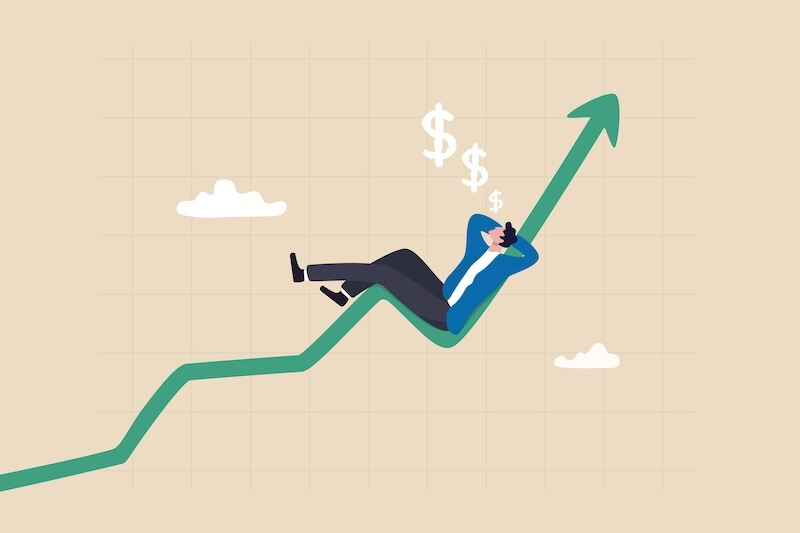There’s an adage about bull markets and how they tend to end: Bull markets don’t die of old age, they’re killed by the Federal Reserve.
And, in fact, we saw exactly that happen recently. The Fed began one of the most aggressive interest rate hiking cycles in March 2022, taking its target rate from near zero to above 5.25% by August 2023.
Sure enough, the last bull market ended, and a bear market ensued – with the S&P 500 falling 25% from early January 2022 through mid-October that year. The market tends to start falling before rate hikes start, and then bottoms before they end as investors anticipate what the Fed will do.
You can see that in action in this chart…
You can see where the anticipation of a new rate hiking cycle (circled in red) caused the market to turn down.
What About This Market?
It doesn’t appear that the Fed plans to end the current bull market any time soon, however. Instead, it seems to be focused on the timing of its first rate cut.
And right now, the futures market sees a 55% chance of that cut coming at the September meeting of the Fed’s interest rate setting committee. Futures traders see a 92% chance that the Fed will cut at least once by year end. That’s if – and only if – inflation moderates further.
And late last week we got some good news on the inflation front. The Fed’s preferred measure of inflation – the core personal consumption expenditures price index – rose only 0.2% month over month. That was the smallest monthly increase this year.
So does this bull market have more room to run?
Market history and recent earnings data both suggest it does. The current bull market is just 19 months old. That’s younger than 9 of the previous 10 bull markets. And so far, the market is up about 48% from that October 2022 low. The average gain of the last ten bull markets is 184%.
Ringing the Bell on Earnings
In addition, U.S. companies are posting very solid earnings.
First quarter earnings season just ended and it was a very good one. According to FactSet, the earnings growth rate for S&P 500 companies was 6% year over year. That’s the highest pace of growth since the first quarter of 2022. And if you exclude the performance of drug company Bristol-Myers Squibb (NYSE: BMY) – which had an awful quarter with a loss of $4.40 a share – the S&P growth rate would improve to 8.9%.
But it gets better…
According to data compiled by Bloomberg, S&P 500 companies are on track to be more profitable than they’ve been in more than a decade.

These companies should exceed an average net income margin of 13% in the second half of this year – and the data suggests that in 2025 they’ll post the highest profit margin seen since 2009.
Numbers Don’t Lie
Wall Street analysts concur…
Analysts expect year over year earnings growth rates of 9.3%, 8.3%, and 17.6% for the second, third and fourth quarters, respectively. And total earnings for 2024 should increase 11.4% over 2023.
What’s driving this rising profitability?
Companies are citing several factors, including pricing power (being able to pass higher costs on to customers without putting a dent in sales), lower commodity prices, efficiencies gained from artificial intelligence technologies and some headcount reductions.
As Alexander Green reminds his subscribers frequently… in the long run, earnings – not interest rates – drive share prices.
With earnings poised to rise and the Fed not looking overly murderous, the outlook for stock prices is very good right now.
Simply put, now is the time to have your money in the market.
Credit: Source link














